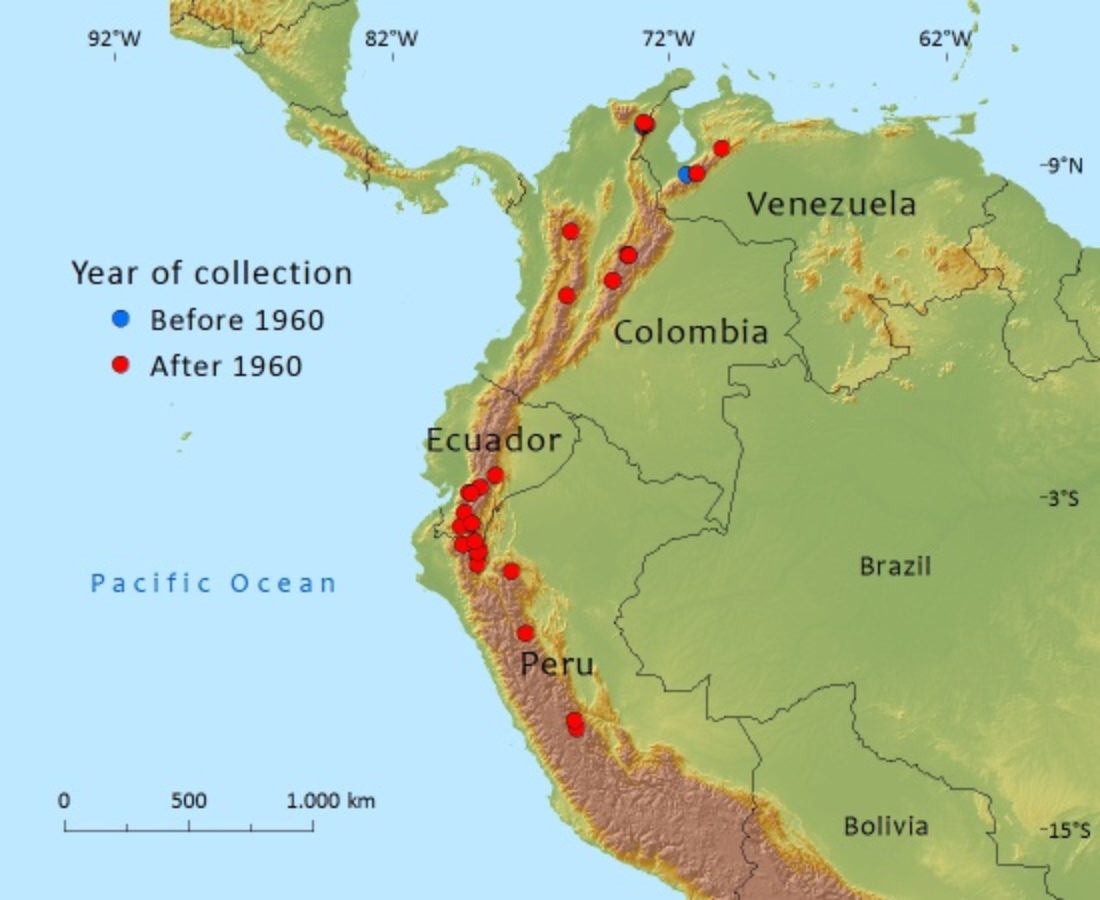Podocarpaceae
Prumnopitys montana
Although this valuable timber tree has a widespread distribution in Tropical South America the population has been significantly reduced due to logging
Human Uses
An economically important species as the wood is considered to be valuable for a range of uses including house construction, the handles of agricultural tools, general carpentry, floors and cabinet making. Its yellow sapwood and reddish heartwood make it attractive for turning.
References and further reading
- Castañeda, F. and A. Perea. (1982). Contribución al conocimiento morfológico de las estructuras floralesde Podocarpus montanus (Willd) Lodd. Monografía. Universidad Nacional de Colombia., Bogotá.
- García, N. (ed.). (2007). Libro Rojo de Plantas de Colombia. Volumen 5: Las magnoliáceas, las miristicáceas y las podocarpáceas. Serie Libros Rojos de Especies Amenazadas de Colombia. Instituto Alexander von Humboldt – Corporación Autónoma del Centro de Antioquia (CORANTIOQUIA), Jardín Botánico Joaquín Antonio Uribe de Medellín – Instituto de Ciencias Naturales de la Universidad Nacional de Colombia, Ministerio de Ambiente, Vivienda y Desarrollo Territorial. Bogotá, Colombia. pp. 236. Instituto Alexander von Humboldt - Instituto de Ciencias Naturales de la Universidad Nacional de Colombia - Ministerio de Ambiente, Vivienda y Desarrollo Territorial., Bogotá.
- Gardner, M. 2013. Prumnopitys montana. The IUCN Red List of Threatened Species. Version 2015.2. <www.iucnredlist.org>
- Marin, A., Romero, J.L. & J.A.Wright. (1998). Gene Conservation with Podocarpaceae in Colombia. Available at: http://www.greenstone.org/greenstone3/nzdl;jsessionid=80821954DCAFF896DEF89A828048 4C9B?a=d&d=HASHcb37168acb111b58f77a1f&c=fi1998&sib=1&dt=simple&ec=&et=&p.a=b&p.s=ClassifierBrowse&p.sa=.
- Marin, A.M. (1997). Ecologia y silvicultura de las Podocarpaceas andinas de Colombia. Cali: Smurfit Cartón de Colombia .
- Nieto, V. M. & J. Rodríguez (eds). (2003). Podocarpus montanus. In: Vozzo, J.A. (ed.), Tropical Tree Seed Manual, United States Department of Agriculture Forest Service.
- Restrepo, L.M.G.R. & J.L.T., Murillo. (2007). Manejo delas semillas y la propagación de diez especies forestales del Bosque Andino. Corporación Autónoma Regional de Centro de Antioquia (CORAUTIOQUA).
